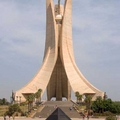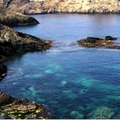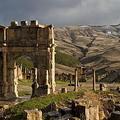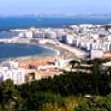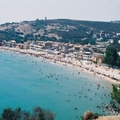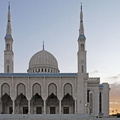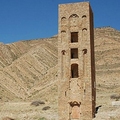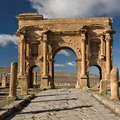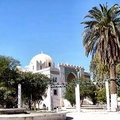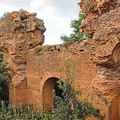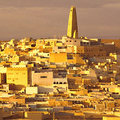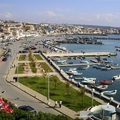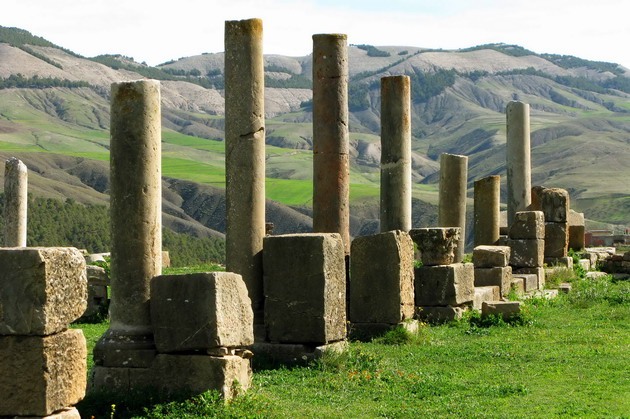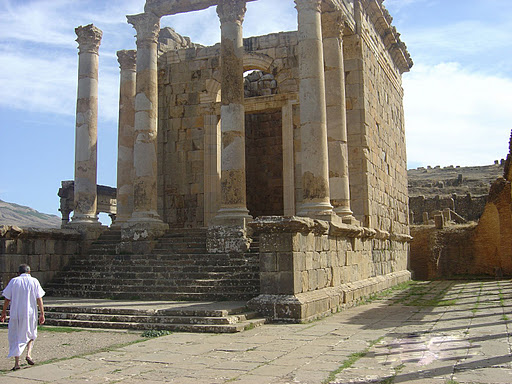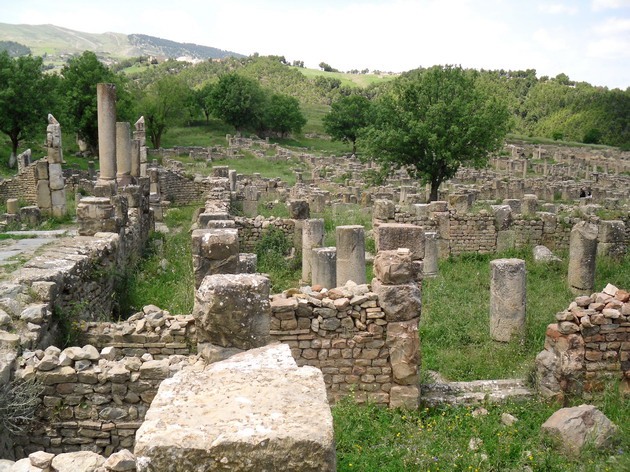World Tourism / The Best Places to Visit in Algeria / Djemila
Djemila
The Djemila city lies at an altitude of 900 m above the sea level. Its temples, basilicas, triumphal arches and other structures are striking examples of the Roman town planning adapted to the location in the mountains. Djemila was during the Roman town known as Cuicul. Today Djemila is a small village in the mountains of the north coast of Algeria, but the ruins of the former city are observed today and it is a worth visiting place for those passionate about history and archeology and more. The archaeological site is protected by UNESCO, which makes much of the former Roman city fairly well preserved. You can see today the basilica, theater, forum, Roman baths, arches and many of the city walls. Djemila territory is located at 50 km north-east of Setif.
History and Description
Known under its old name Cuicul, Djemila is an establishment of an ancient Roman colony, founded during the reign of Nerva (96 - 98 AD). The Roman city occupied an exceptional defensive position. Cuicul represents some of the colors of the Roman architecture in North Africa. Remarkably adapted to mountainous places restrictions on a rocky spur, which extends to a height of 900 meters, between Wadi and Wadi Guergour Betame, two mountains, the city has its own Senate and Forum. Around the beginning of the 3rd century it expanded beyond its ramparts with the creation of Severus Septimiusa Temple, the Arch of Caracalla, a market and a civil basilica. The location was also noted by Christianity in the form of several religious buildings: the cathedral, the church and its baptistery considered among the greatest of the period. The territory includes an impressive collection of Djemila mosaic pavings, illustrating the mythological stories and scenes of everyday life. Djemila is an evidence to a civilization that has disappeared. This is one of the most beautiful Roman ruins in the world. Archaeological remains, well-integrated the Roman urban planning and the surrounding environment includes elements that represent the values assigned to this place. Djemila is an outstanding example of the type of architectural ensemble which illustrates a significant stage in the history of Roman North Africa. In this case, the classical formula of the Roman urban planning has been adapted to geophysical constraints place. The place includes a very diverse typological and architectural repertoire with a protective system, and the Arch of Triumph, a public toilet and the theater building, the means to craft and trade, including market brothers Cosinus, which is a remarkable evidence of the economic prosperity of the city. Cemil evidence to the Roman civilization is an outstanding example, with its forum, temples, basilicas, triumphal arches and houses, an architectural ensemble of the representative of Roman culture. This is also an interesting example of Roman town planning adapted to a mountain location. The Roman colony Cuicul was probably based on an existing territory Dje'mila, during the brief rule of Nerva (AD 96-98).Early city, which name has a Berber origin, is a great defensive position on a rocky spur, which extends to a height of 900 meters, between two mountain streams, Wadi Wadi and Guergour Betame. The classical formula of the Roman urban planning has been adapted to the physical limits places: at both ends of the cardo Maximus, the basis of the two gates. In the center of a forum, a nested square surrounded by buildings are important to the functioning of the civil life: the Capitolium to the north and the Civil Basilica (Basilica Julia) to the west. The aristocratic housing set with rich mosaics, from where they draw their modern names (the House of Amphitrite, the House of Europe, etc.) multiplied during the second century in the central quarters, where the Temple of Venus and the Genetriks macellum (covered market) is also located. However, this tight defensive situation, surrounded by walls, prevented the development of the city. In the mid-second century, the city has expanded so to the south, where a new quarter, both rich in public buildings and private housing, has been installed. Here were built the Caracalla Arch, the Severus church , a new forum, the theater (already completed at Antoninuse Pius), and, further ahead, baths, built in the reign of Commodus. Among the buildings of the classical period the Basilica Vestiaria (Market tissue) and the fountain, which is a small replica of the meta Sudens in Rome, are remarkable. Christianity was introduced into the southern quarter shortly. The remains of the buildings located the Episcopal there, two basilicas, a baptistery, the chapel and some buildings, the residence of the bishop and priest. The Vandals were Dje'mila for only a short time, the city was retaken by the Byzantines in 553. The excavation did not begin on the territory of the left, which has been one of the most beautiful Roman ruins in the world until 1909.
Others The Best Places to Visit in Algeria .
Maps of Djemila
map AlgeriaOthers from The Best Places to Visit in Algeria
Algeria is a bizarre mix of different cultures and foreign influences.
Each city in this magical country keeps a lot of pleasant surprises for the curious researchers.
This is the second largest country in the entire African continent, therefore you can be sure that there are enough cities to visit.
It is worth noting that tourism in the region went into decline because of the outbreak of the political conflict in the country, accompanied by a reliable guide, armed with some sage advice, anyone can visit the most attractive areas of Algeria.
Ein Sefra is commonly referred to as `the gateway to the Sahara '.
The town itself is not rich in sights, but nevertheless this trend is noteworthy because it is one of the best places directly bordering the desert.
Algeria is the largest and the most important Algerian town, this area is definitely not to be missed.
This bustling metropolis, which will give you the opportunity to plunge into urban life.
You will find a delicate interweaving of architecture of ancient times to modern buildings, and when you get tired, let your eyes rest on the fresh glow of the Mediterranean.
Algeria is one of the best places to study the French-Arabic culture.
The next line is the amazing Annaba.
Fairly large city, which is largely similar to Algeria.
Annaba offers good food, convenient transportation and wonderful relaxing atmosphere.
Visit the city of Batna gives you the opportunity to see the ancient ruins of the ancient times.
There are many other wonderful places that are worth seeing in Algeria.
Most of the guests in the first few days may experience a slight culture shock of extraordinary experiences that makes this country.
It is worth noting that Algeria is not a lot of luxury service, which is so rich in America and Europe.
But people here are friendly and welcoming, they have an interesting culture, stunning architecture, amazing history and beautiful country - but what else is needed for a wonderful holiday! Currency The Algerian dinar Algerian dinar = 100 centimes, 1 U.
S.
dollar = 70 dinar, 1 euro = 98 dinars.
Geography Algeria is a country in North Africa, in the western Mediterranean basin.
Algeria borders Morocco to the west, Mauritania and Mali to the south-west, Nigeria to the south-east, Libya and Tunisia in the east.
Algeria is the second largest African country, a large portion of the area which lies in the Sahara desert.
Things to Do Excursions and sights of Algeria The ancient city of Algiers spreads like an amphitheater in the hills of the same name in the bay.
Most buildings are constructed of a light construction material which gives the city a festive look.
You can see the distinctive Arab Kasbah in the old town with quaint narrow streets and disorder one-story houses with flat roofs, graceful mosques and other buildings in the oriental style.
Among them are built in the XVII century mosques and tombs and the Siddhi Abdarrahman Jami al-Jadid Mosque.
Still, if anyone dares to visit Algeria, then do it mostly to see the Casbah - the old city, one of a kind left on the Earth.
Full of dark alleys and dead ends, the mysterious city is the heart of Algeria.
Alien and incurious, it shows only blank walls.
However, human and alive, these old neighborhoods remained unchanged since the XVI century.
This is the Medieval world, a world where every step faces night and day, shadows and lights.
Another jewel in the necklace of the Algerian wonders is Constantine, one of the most beautiful and unusual cities in the world.
Located on the north-east of the country, the city is relatively close to the border with Tunisia.
The city suddenly comes up and out of the pile of rocks, canyons and steep cliffs.
The once-rough river Rummel carved in the rock island.
On the island there was a city - Ksantis.
The river was gone, leaving it an empty eternal companion - left and right, top and bottom.
Our Swallow's Nest is vaguely reminiscent of that flying over the land the city.
One of the streets is called: 'Boulevard of the Abyss'.
Among other attractions is the healing power Meskutin Hammam.
It is said to cure all diseases (including diabetes, even).
The water is the hottest after the Icelandic geysers which is 98 degrees.
Tourists are advised to take raw eggs and eat, boiled in the source.
The country's history In ancient times, in what is now Algeria, ancient tribes lived.
On the coast was the Phoenician colony; III-II century BC.
State Numidia.
In the I century BC.
it was conquered by Rome, and in 47 BC.
it was converted into a Roman province; V century was the coastal part of North Africa (including the territory of modern Algeria) conquered the Vandals; VI century - Byzantines expelled the Vandals; VII century - the invasion of the Arabs.
The Arab Caliphate.
Islamization of the country; 1518 - fear of the colonial expansion of the Spaniards seized the coastal cities, the local rulers seek the help of the Turks.
Algeria in its present borders became a province of the Ottoman Empire.
On the coast of Algeria piracy flourishes; 1711 - achieved de facto independence from Turkey, 1830 - the beginning of French colonization.
The best lands of the country were inhabited by the colonists from Europe, 1848 - Algeria is declared a territory of France and it is headed by the French governor-general, July 1, 1962 - the vast majority of Algerians voted for independence, which was immediately recognized by the government of France.
More than a million Europeans and their supporters from among local residents hastily fled the country.
Climate Algeria has a subtropical Mediterranean climate in the north due to the tropical desert of the Sahara.
Winters on the coast are warm and rainy (12 ° C in January), in the mountains cool (2-3 weeks of snow), the Sahara is dependent on the time of day ( at night below 0 ° C, 20 ° C during the day).
Summer in Algiers are hot and dry.
The annual precipitation ranges from 0-50 mm in the Sahara to 400-1200 mm in the Atlas Mountains.
There are frequent dust storms and dry winds from the desert regions.
In this unusual country it is better to go in the autumn months, when the stifling heat begins to subside, and you can move around without risking to be burned alive.
In summer on the Atlantic coast can be very hot, and cold weather can ruin a trip.
Credit Cards Accepted in major cities.
Culture The state actively combats culture in the country.
Berber culture has an important place in contemporary Algeria.
But residents were replenished from the French, who were colonized for many years.
Museums Among the museums in the country the most interesting museum is that of ethnography and ancient history and the National Museum of Antiquities.
The National Museum of Fine Arts is worth visiting too.
All of them are in the capital, the museum in the city of Constantine Cirta is known for its archaeological exhibits.
You can also select the following: in Oran, the stronghold of Santa Cruz, the Great Mosque (XVII century), in Blida, a mosque built by the pirate Barbarossa (Hayraddinom) in Annaba, the ruins of the ancient city Afrodizium (early first millennium BC the city was a center of early Christianity and in 430 St.
Augustine died) In Constantine, the old city walls, built by the Arabs of the sculptures of the Roman period, the Roman citadel, the Sidiel-Cattani (XVIII century) Mosque, the palace of the XIX century, in Biskra – the Tomb conqueror of North Africa Okba (the earliest known inscription in Arabic script in Africa).
In the capital, the XVI century citadel, built by the Turks, and the old city.
Population :32,531,853 people, density - 13.
6 people / km ² .
Areas and Resorts in Algeria Algeria has four major physical regions.
In the north, stretching along the coast and leaving for the south 80 to 190 km, is located Tel consisting of narrow valleys ending part of the Atlas mountain range.
In the Atlas Mountains begins the main river in the country Chelif, which empties into the Mediterranean Sea.
In the south is the river Telya.
The second region is in the High Plateau, a few basins which in the rainy season forms small lakes.
After drying, they are transformed into the salt area, called Schott or chott.
The third region is the part of the Saharan Atlas Mountains.
The fourth, occupying more than 90% of the country is the Algerian Sahara desert stone.
In the south region are the Ahaggar Mountains and the highest point in Algeria the Tahat Mountain (3003 m).
Clothing You should not experiment clothes, else you may be a party scene, trembling with rage when the Algerians can `tear 'Europeans.
For them it is an insult and blasphemy.
Indeed, the Prophet Muhammad was a merchant, and this profession in the Muslim world is honorable and decent, and the money are respected.
Authorities Polity - the republic (in fact, the military regime).
The head of state is the president.
The head of Government is the Prime Minister.
The highest legislative body is the Parliament (unicameral National People's Congress).
Algeria is member of the IMF, the OAU, the Arab League, OPEC.
This president is Abdelaziz Bouteflika.
Food and water Lubia – the Algerian special dish, the flavor that comes from Dersu is a mixture of dried spices to the ground chilli pepper (to move to New Mexico, USA), garlic, caraway seeds and groundnut.
Dersu is the most commonly used in seasoning Algerian cuisine.
Traditionally, a little vinegar is added.
Also traditional is the chicken with green olives (mestalla).
Area 2,381,740 km ².
Shopping Purchases can be performed as in shopping centers and in local shops and at many markets.
Minerals There are significant deposits of iron, zinc, lead, copper, arsenic, mercury, and phosphates.
Rules of Conduct Bargaining is always appropriate and appreciated.
Holidays New Year's Day - January 1, Labor Day - May 1 Memorial Day - June 19 Independence Day - July 5 Anniversary of the Revolution - November 1, Ramadan, Eid al-Fitr, Eid al-Adha, New Year and Mawlid An-Nabi - religious holidays.
Nature and animals The flora of Algeria is quite poor.
Only a few tracts of forests in the north (oak, olive, pine and arborvitae) have survived.
In the Sahara desert, the vegetation, except for the small oases, is virtually absent.
The animal world is also not very diverse.
In recent decades, lions, leopards, gazelles, ostriches have almost entirely disappeared.
The berber macaque, the rabbit, jackals, hyenas, many lizards, 20 species of snakes, a large number of spiders, including phalanx and the scorpion are preserved.
Industry Algeria ranks the fifth in the world.
It’s largest natural gas reserves are oil.
Religion 99% Muslims.
Health Risks The main problem of the country's health - epidemics such as malaria and tuberculosis, malnutrition and trachoma.
Sanitary standards Sanitary-epidemiological situation leaves much to be desired, but there is no need for vaccinations.
Agriculture Cultivation of wheat, oats, and fruits, especially citrus fruits, and vegetables are developed.
Souvenirs A special attraction of Algeria is a large amount of carpet design and manufacturing processes that differ from region to region.
Jewelry and wood products are also included in the list of goods that should be seen.
Transport The length of the railway network of Algeria is of 3973 km, of which 283 km are electrified, road runs 85% of domestic passengers and 73% of all freight in Algeria.
The total length of 104 thousand km of roads, includes paved roads - 71.
7 thousand km.
The transport of passengers is represented by the railways and buses.
4 day trains run from Algiers to Oran, Algeria, one in El Shelif, one from Oran to Tlemcen, and two nights from Algiers to Annaba and Constantine.
Railroads in Laghouat and Biskra do not function.
In Tunisia and Morocco also.
The train costs more than the bus, but it is faster, for example, from Algeria in Oran - 4.
5 hours.
Buses are the main vehicle of Algerians, as the prices for tickets are not so high - one dinar per kilometer.
Night buses do not go in Annaba because of the danger of terrorism.
Roads are qualitative.
Tourism Tours in Algeria Algeria has a great potential for tourism development, in particular, it has thousands of kilometers of excellent beaches, under-utilized at present.
Festivals Exhibitions Ramadan is the ninth month of the lunar calendar, while events of the first revelation of the Prophet Mohammed.
This is also the month when God asks his faithful to fast from dawn until dusk, when they are healthy and do not travel.
After sunset, Muslims stop fasting, and generally begin with something sweet to raise blood sugar as Sunnah (one of the disciples of the Prophet Muhammad) ordered.
The evening is filled with all sorts of pleasures - eating, visiting with family friends, prayers in the mosque.
Flag The national flag of Algeria.
The aspect ratio of 2:3, consists of two vertical stripes of equal width of green and white.
A red star and a crescent are in the center.
The colors of the flag symbolize: Green - Islam, white - purity, red - freedom.
The crescent and the star are the symbols of Islam.
The crescent is more closed than in other Muslim countries, as the Algerians believe that the longer the horn crescent bring happiness.
Date of decision: 03.
07.
1962.
Tips are not accepted.
Language Arabic, French.

